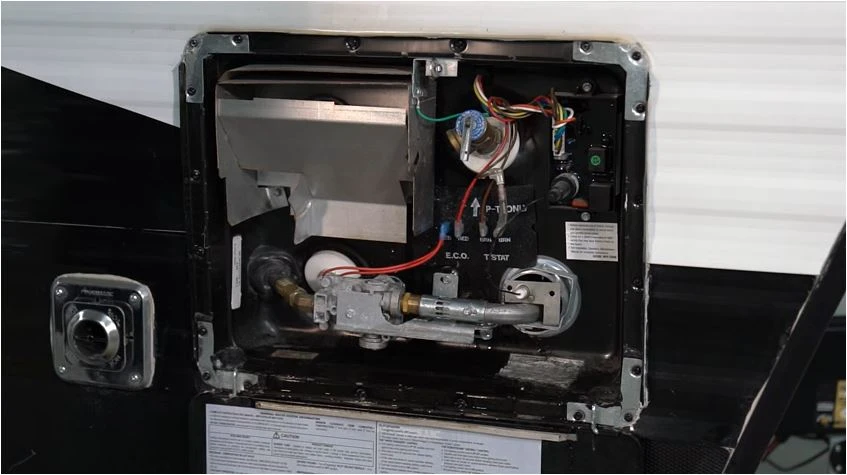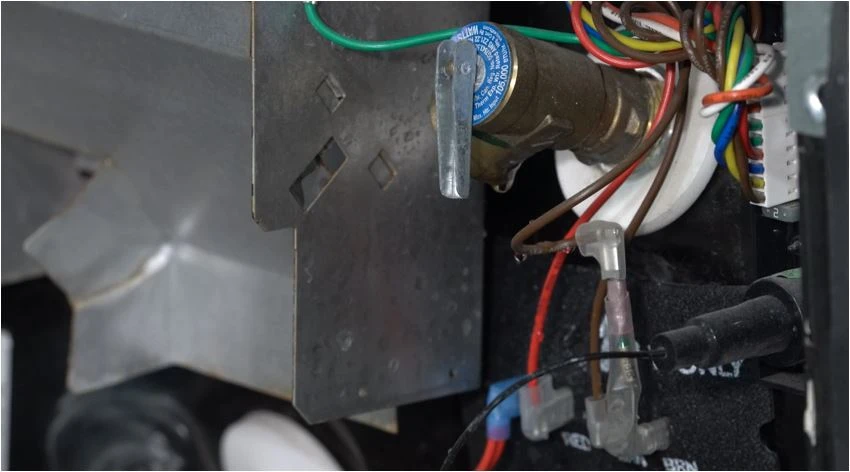| Note: This article may contain affiliate links, which means if you make a purchase following our links won’t cost you extra, but we may earn a commission. Learn more |
Many Jayco owners have experienced problems with their heaters blowing cold air. It’s a common problem and can be caused by multiple reasons, such as a malfunctioning thermostat or issues with the propane supply. Another typical concern is the Jayco heater refusing to turn on. This can be attributed to electrical issues, blown fuses, or a problematic switch.
On the contrary, some Jayco heaters face the peculiar problem of not turning off. This indicates a potential glitch in the thermostat or faulty wiring. If your heater isn’t heating, the burner might be clogged or the ignition might be failing.
Meanwhile, some Jayco models have been reported to stop working abruptly, which could be due to wear and tear, accumulated dust, or other internal malfunctions.
Water heaters in Jayco RVs have their set of common troubles. Many users report issues with the water heater either malfunctioning or not heating water adequately. And while the diesel heaters in some Jayco models are efficient, they too can face similar issues. The propane furnace, on the other hand, has had instances where the propane doesn’t ignite, leading to heating problems.
Also, those with Jayco’s tankless water heaters have reported intermittent problems. A regular check and timely maintenance of these systems can ensure a hassle-free experience. Remember, if problems persist, consulting an expert or the Jayco service center can offer a solution.
Jayco Heater Not Working! Fix Now
Jayco heaters are fundamental for those who travel in RVs and trailers. Yet, there are times when these heaters can malfunction. Being aware of the typical problems and how to address them ensures a warm and cozy environment.
1. Disrupted Power Supply to the Heater
One of the most straightforward issues to face is a power disruption to the heater. Often, it’s a matter of the water heater not being connected to its designated power source.
By visually inspecting all power connections and ensuring cords are properly plugged in, many find immediate resolution. If power outages are frequent, having a backup power solution might be worth considering.
2. Circuit Breaker Complications
An overloaded circuit or a short can result in a tripped circuit breaker, halting the power to the Jayco heater. Regularly monitoring the breaker box and ensuring the breaker specific to the heater remains in the ‘on’ position is essential.
If recurrent tripping occurs, it signals a larger electrical issue. Consulting an electrician or RV technician can identify and rectify the underlying cause.
3. Thermostat Settings and Malfunctions
The thermostat controls the temperature output of the heater. Occasionally, the settings might be altered accidentally, leading to undesirable temperature levels. Rechecking and resetting the thermostat can solve such discrepancies.
If inconsistencies persist, or the heater fails to respond to changes in the thermostat setting, the thermostat unit may be defective. In such a scenario, replacing the thermostat often rectifies the heating problem.
4. Propane Supply Disruptions
For propane-fueled Jayco heaters, an inconsistent or depleted propane supply can hinder its function. Periodically checking the propane levels and ensuring there are no leaks in the supply line is vital.
Replenishing the propane and addressing any leakages can ensure smooth and continuous heating.
5. Blockages and Dirt Accumulation
Over time, dirt, dust, and debris can accumulate in the heater vents or burner assembly, compromising its efficiency. Periodic cleaning and removal of obstructions can rejuvenate the heater’s performance. Using a soft brush or vacuum can effectively remove accumulated debris and ensure unhindered airflow.
6. Component Wear and Tear
Like all appliances, parts of the Jayco heater can degrade over time. Regularly inspecting components like the igniter, burner assembly, and wiring can preempt sudden malfunctions. Replacing worn-out parts as necessary can prolong the heater’s lifespan and maintain its efficiency.
Learn More: Hot Water Heater Blankets Really Worth It?
Common Jayco Tankless Water Heater Problems
1. Inconsistent Heat Output
One of the most reported issues with Jayco tankless water heaters is fluctuating heat. At times, users find that the water is either too hot or suddenly turns cold. This fluctuation is commonly due to mineral build-up affecting the heat exchanger. Regularly flushing the system with a descaling solution can help maintain consistent heat output.
2. Ignition Failures
A tankless water heater requires a successful ignition to start its heating process. Failures can result from gas supply issues or dirty igniters. Ensure a steady gas supply and periodically clean the igniter to prevent this issue.
3. System Overloads
Occasionally, the system might shut down abruptly, signaling an overload. This typically happens if multiple appliances demand hot water simultaneously. To prevent overloads, stagger the usage of hot water appliances or consider upgrading to a unit with a higher capacity.
4. Error Codes
Modern tankless water heaters display error codes to indicate specific problems. Familiarize yourself with common codes and their meanings. Consulting the user manual can provide quick insights into the nature of the problem and potential solutions.

Jayco Electric Water Heater Problems & Their Solutions
1. No Hot Water
Perhaps the most blatant sign of a problem is the complete absence of hot water. This issue often arises due to a malfunctioning heating element. Testing the element for continuity and replacing it if faulty can solve this problem.
2. Tripped Circuit Breaker
If your electric water heater stops working, the circuit breaker might have tripped. Always check the electrical panel. If the breaker corresponding to the heater continually trips, it might indicate a more significant electrical problem or a faulty heater component.
3. Thermostat Issues
The thermostat governs the temperature of the water. If set too low, it results in lukewarm water. Adjusting the thermostat can resolve this. But if the problem persists, the thermostat may be defective and may need replacement.
4. Leaks and Drips
Notice water pooling around the heater? Leaks can be due to worn-out valves or a corroded tank. Identifying the source of the leak is the first step. Replacing faulty valves or addressing tank issues can prevent potential water damage and restore the heater’s function.
Learn More: Water Heater Timer Installation: Does It Save Money?
Switching Up: Jayco Water Heater Replacement
1. Spot the Signs
Not all issues with a Jayco heater necessitate a full replacement. However, persistent problems like continuous leaks, irregular heating, or frequent system breakdowns signal the end of your unit’s lifespan. These persistent issues, combined with the age of your heater, can be indicative that it’s time for a change.
2. Choose the Right Model
Different RVs or trailers might require specific types of heaters. Before making a purchase, research the best fit for your model. Factors to consider include the size, energy source, and capacity of the new unit.
3. Professional Installation
Replacing a water heater is not just about disconnecting the old and connecting the new. It requires an in-depth knowledge of electrical systems, plumbing, and gas connections. Enlisting professional help ensures a safe and efficient installation.
4. Disposal of the Old Unit
Proper disposal of the old heater is crucial. Many components can be recycled or need special handling due to environmental regulations. Check local disposal guidelines or consult with the installation technician for guidance.

How to Avoid Common Problems With Jayco Heaters: Expert Advice
1. Regular Maintenance: One of the key strategies to avoid any heater problems is consistent maintenance. Flushing the system periodically, checking for mineral buildup, and cleaning vents can extend the life of your heater and ensure its optimal performance.
2. Understand Your Unit: Each heater model is unique. Familiarize yourself with its features, operational sounds, and user manual. Recognizing what’s normal for your specific unit can help you quickly identify anything out of the ordinary.
3. Monitor Thermostat Settings: Unintended changes in thermostat settings can result in temperature fluctuations. Regularly check the thermostat, and consider marking your preferred setting, making it easy to spot and correct any inadvertent changes.
4. Address Minor Issues Promptly: Small issues can escalate if left unattended. Whether it’s a minor leak, an unusual sound, or a slight drop in heating efficiency, addressing these concerns immediately can prevent more significant problems in the future.